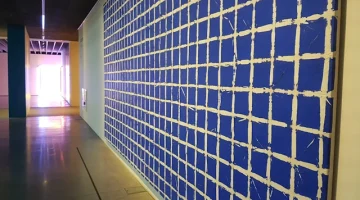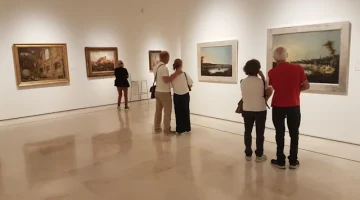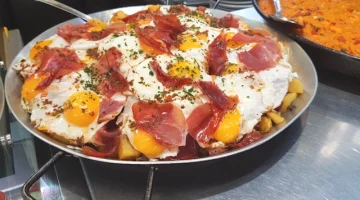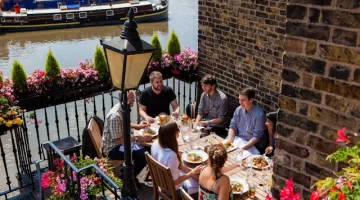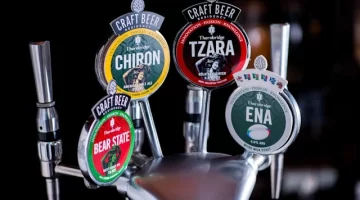Belgian Chocolate-Making
Donna Dailey gets a lesson in Belgian chocolate-making in Ghent in Belgium with Mia Ackaert and Hendrik Mesuere at their chocolate shop and workshop, Maison 12.

‘Every day I eat chocolate!’ says Hendrik Mesuere in the chocolate shop and workshop that he shares with his wife Mia Ackaert in Ghent. When someone asks how he stays so slim, he answers: ‘Because also I bicycle!’
Well, if I made chocolates as good as Hendrik makes I would eat them every day too. And I’m about to find out some of his secrets as he shares them in one of the chocolate-making workshops he and Mia offer at their shop on Onderstraat, Maison 12.

Hendrik has been a chocolatier for most of his life, like his father before him. He and Mia met through a mutual love of chocolate-making.
‘I love making chocolate because I can be very creative,’ he explains. ‘Also, I like to use chocolate from all different countries because they are all different. It’s just like wine because they all have their terroir. And also this is the magic of chocolate – immediately you have results.’
To begin with we’re offered five different chocolates to get us in the mood, and they are of course all mouth-watering creations. There’s a simple Belgian truffle, a chocolate with a tea ganache, a biscuit of pistachios with red fruit and lemon cream and with a strawberry on top, an almond biscuit with chocolate cream, and a profiterole with vanilla cream inside and caramel on top, with a little bit of sea salt to contrast the chocolate.
They’re all in a day’s work for Mia and Hendrik, and go down a treat. But then it’s time to get serious and we put on our hats and aprons.

‘The workshops are not for professionals,’ Henrik says. ‘We use no machinery. All I have is my chocolate, and what I make here you can make at home.’
We start with chocolate, sugar, butter, cream and a vanilla bean. He halves the vanilla bean, takes out the seeds and puts them into the cream.
‘You can do this with cinnamon, lemon, herbs, tea… whatever flavour you want.’
He then adds the sugar, puts the mixture on the heat and stirs gently. This is to make the interior of the Belgian truffle that we just drooled over. He mixes the cream with the chocolate and lets the heat of the warmed cream melt the chocolate. He keeps stirring slowly.
‘We need to let the chocolate cool for 10-15 minutes so it’s the same temperature and texture as the molten butter, otherwise they won’t blend. When it’s cold you can also put liquors like Cointreau into it.’

He pours the chocolate onto the stone to cool it, spreads it out and stirs it with a spatula. Henrik explains that you don’t need fancy equipment. If you don’t have a stone counter-top, use a tile. He uses cheap spatulas, a metal bowl from IKEA (‘It is one-third the price of the professional bowls and just as good.’), and even DIY tools like scrapers and putty knives.
When Henrik is happy with the temperature and the texture, he adds the butter to the chocolate. He then puts the chocolate into a piping bag and squeezes the mixture out onto greaseproof paper in a steady sequence of perfect shapes. He hands me the piping bag and invites me to have a go. It’s harder than he makes it look.
‘Sometimes,’ he says, looking at my attempts, ‘we have a new creation.’
For better or worse, these interiors then go into the fridge to cool down. Next he prepares the chocolate to fill the moulds. The chocolate has to be crispy and shiny, he says.
‘It also has to be at the right temperature: 31 degrees. Not 30 or 32 but 31! At the moment it’s 45 in order to melt it. When you heat the chocolate it changes its consistency, changes its molecules. The ingredients split and you have to mix it and mix it so the molecules get in the right order. This mixing is known as tempering the chocolate. Normally you have a machine but you can also do it by hand. The chocolate is 45 degrees and the table is 20 degrees so that will balance it down to 31 degrees.’
In order to check the temperature, he put a drop of the chocolate on his lips and can tell exactly how hot it is.
‘My inner thermometer!’
He continues to slap and swirl the chocolate on the counter-top, with the spatula and putty knife making a click-clack sound as he swishes the chocolate around, stopping from time to time to test the temperature.
’31 degrees,’ he declares eventually, not even checking with a thermometer. We all help fill the moulds with the chocolate, and put them into the fridge to chill. After a little more chat about chocolate, and a visit he and Mia made to Ghana recently to check their chocolate, it’s time to take out the fillings we made earlier. He shows us how to drop them into molten chocolate, take them out, and then drop them in cacao powder and roll them like a marble to coat them in the flakes.
Needless to say our efforts don’t look quite as polished and smooth as Henrik’s but when we sample them we discover that they taste just as good.
‘Yes,’ says Hendrik, ‘these are good. You know, I have been making chocolate for 40 years but every single time I make chocolate I still find it exciting.’


